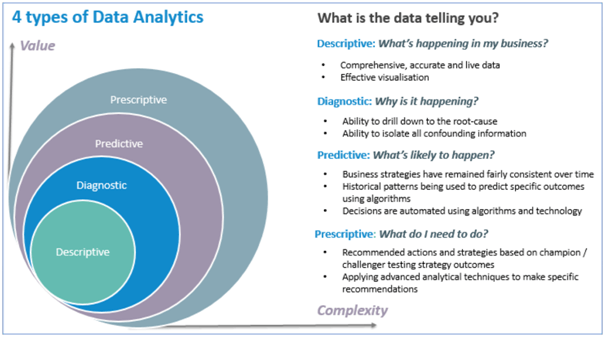Data Centre industry is very competitive nowadays with a growing number of data centre operators in the region that are able to provide a more comprehensive suite of services to support enterprise requirement. In order to compete and stand out from other data centres, besides focusing on its product and services offerings, the data centre has to adopt new technologies to optimize the resources they have to improve data centre efficiency, productivity, and security.
Table of Contents
Artificial Intelligence (AI)
AI is the technology enabling machines to learn from experience and perform human-like tasks. AI systems perform intelligent searches, interpreting both text and images to discover patterns in complex data, and then act on those learnings based on mountains of data created by humans. Nowadays, AI is influencing the development of modern data centres. With the surge in the amount of data every day, traditional data centres will eventually get slow and result in an inefficient output.
Data centre operators can drive efficiencies up and cost down by using AI in many ways. There is also a trend that future data centre will apply face recognition AI technology for data center security. As an example, Google uses the Google DeepMind system to significantly improve the power efficiency of its data centre. The system makes all the cooling-plant tweaks on its own continuously. It can help companies achieve saving up to 30% of the plant’s energy annually. This showed that companies can significantly reduce their energy-related costs using AI.
The picture below shows how the company uses AI software from LitBit to automate the management of data center facilities.

Data Analytics
In today’s big data era, data is growing at unprecedented speed. Data is the company’s most valuable asset. Data analytics is the process of examining data sets in order to draw conclusions about the information they contain, increasingly with the aid of specialized systems and software. Data analytics technologies and techniques are widely used in commercial industries to enable organizations to make more-informed business decisions.
There are 4 types of data analytics we encounter in data science, namely Descriptive, Diagnostic, Predictive and Prescriptive.
• Descriptive: What is happening?
Descriptive analytics is designed to get us basic expository information: who, what, when, where, how many? It is the backbone of reporting—it’s impossible to have BI tools and dashboards without it.
• Diagnostic: Why is it happening?
Diagnostic data analytics is the process of examining data to understand cause and event, or why something happened. Techniques like drill-down, data discovery, data mining, and correlations are often employed.
• Predictive: What is likely to happen?
Predictive analytics is used to identify trends, correlations, and causation. It utilizes statistical algorithms and AI-driven machine learning techniques to analyze data gathered over time to anticipate future outcomes.

• Prescriptive: What do I need to do?
Prescriptive analytics is where AI and big data meet to help predict outcomes and what actions to take. It can help us test the right variables and even suggest new variables with a higher chance of generating a positive outcome.
Data centres are undergoing constant changes because the needs of customers are constantly shifting. Companies frequently spin their computing and data storage requirements up or down based on demand from customers. To prevent any knockdown effect throughout the facility’s infrastructure, simulation programs driven by predictive analytics can solve this problem.
These programs run through model-based simulations that take into account a variety of complex variables. It can anticipate how moving equipment will affect heat dispersion or network latency in a data centre. Technicians can then manage equipment and services with minimal disruption. By flagging potential issues, predictive analytics simulations can also help to avoid major problems that would otherwise require significant time and effort to troubleshoot and resolve.
Augmented Reality (AR)
AR is the overlay of digital content on the real-world environment. When one sees the real world supplemented with digital objects, that is AR. AR layers digital information and/or data on top of a user’s view of the real world. It might be something as simple as text notifications or Internet search information delivered through a wearable device or as complex as delivering personalized marketing content to consumers through sensors to a smartphone.
The full content is only visible to SIPMM members
Already a member? Please Login to continue reading.
References
Ali Marashi. (2018). “Building a Better Data Center with Predictive Data Analytics”. Retrieved from https://www.vxchnge.com/blog/building-a-better-dwata-center-with-predictive-analytics, accessed 23/06/2019.
Melisha Dsouza. (2018). “How AI is going to transform the Data Center”. Retrieved from https://hub.packtpub.com/how-ai-is-going-to-transform-the-data-center/, accessed 23/06/2019.
Raging Wire. (2016). “RagingWire launches Immerse “Real Life 3D” Virtual Reality Tour Of Its California Data Center”. Retrieved from https://www.ragingwire.com/news/ragingwire-launches-virtual-reality-tour-of-california-data-center, accessed 23/06/2019.
Ruth Ng Yin Fun, ADPSM. (2019). “Data Analytics and Artificial Intelligence for Cognitive Procurement“. Retrieved from SIPMM: https://publication.sipmm.edu.sg/data-analytics-artificial-intelligence-cognitive-procurement/, accessed 23/06/2019.
Shun Huang. (2017). “Brief Introduction of Data Center Technologies”. Retrieved from https://www.codeproject.com/Articles/1181824/Brief-Introduction-of-Data-Center-Technologies, accessed 23/06/2019.
Susan Tan, DPSM. (2018). “The Impact of Virtual Reality and Augmented Reality (AR) on Procurement“. Retrieved from SIPMM: https://publication.sipmm.edu.sg/impact-virtual-reality-augmented-reality-procurement/, accessed 23/06/2019.
Thomas Maydon. (2017). “The 4 Type of Data Analytics”. Retrieved from https://www.kdnuggets.com/2017/07/4-types-data-analytics.html, accessed 23/06/2019.

